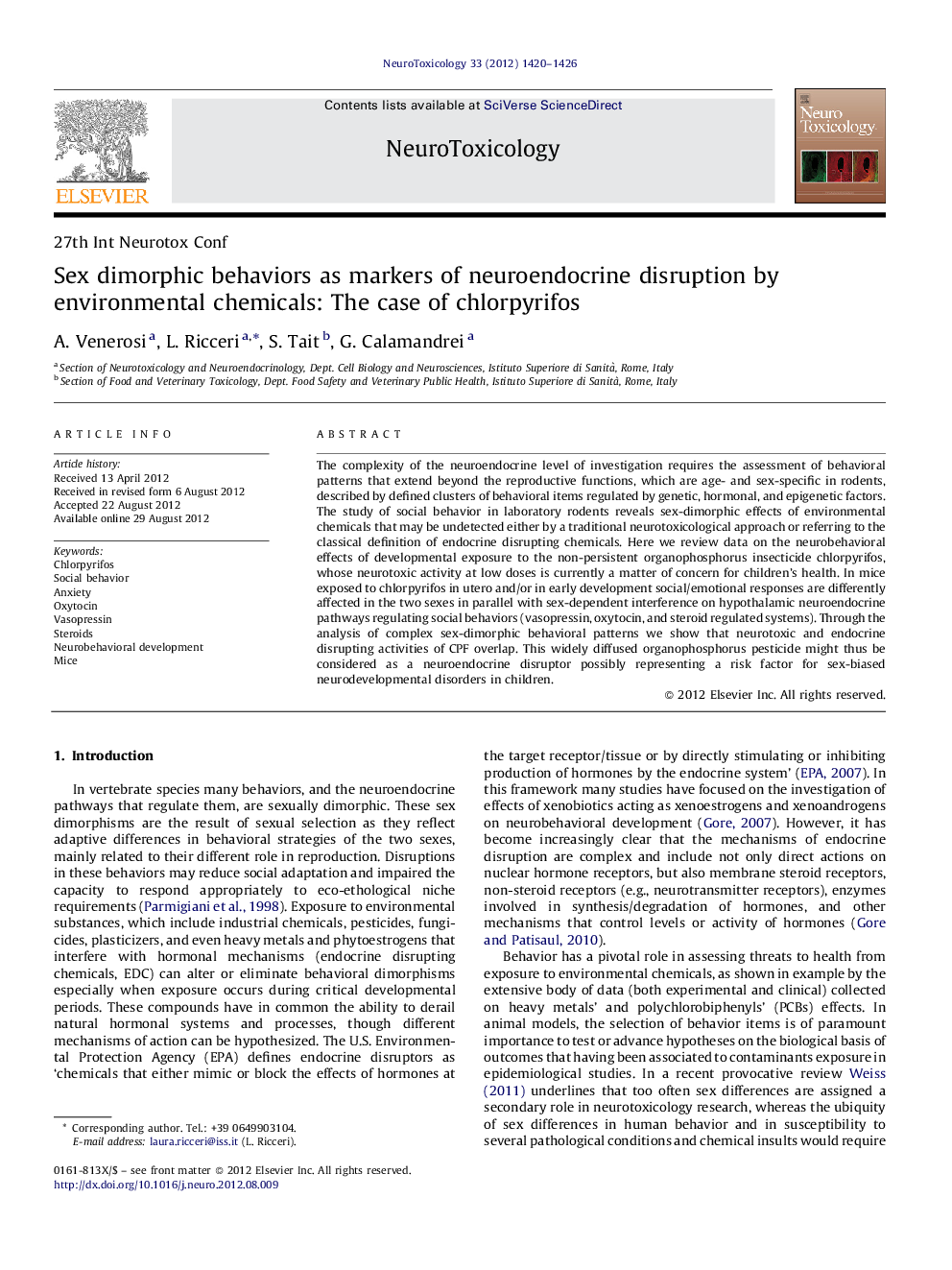| کد مقاله | کد نشریه | سال انتشار | مقاله انگلیسی | نسخه تمام متن |
|---|---|---|---|---|
| 2589903 | 1131714 | 2012 | 7 صفحه PDF | دانلود رایگان |

The complexity of the neuroendocrine level of investigation requires the assessment of behavioral patterns that extend beyond the reproductive functions, which are age- and sex-specific in rodents, described by defined clusters of behavioral items regulated by genetic, hormonal, and epigenetic factors. The study of social behavior in laboratory rodents reveals sex-dimorphic effects of environmental chemicals that may be undetected either by a traditional neurotoxicological approach or referring to the classical definition of endocrine disrupting chemicals. Here we review data on the neurobehavioral effects of developmental exposure to the non-persistent organophosphorus insecticide chlorpyrifos, whose neurotoxic activity at low doses is currently a matter of concern for children's health. In mice exposed to chlorpyrifos in utero and/or in early development social/emotional responses are differently affected in the two sexes in parallel with sex-dependent interference on hypothalamic neuroendocrine pathways regulating social behaviors (vasopressin, oxytocin, and steroid regulated systems). Through the analysis of complex sex-dimorphic behavioral patterns we show that neurotoxic and endocrine disrupting activities of CPF overlap. This widely diffused organophosphorus pesticide might thus be considered as a neuroendocrine disruptor possibly representing a risk factor for sex-biased neurodevelopmental disorders in children.
Journal: NeuroToxicology - Volume 33, Issue 6, December 2012, Pages 1420–1426